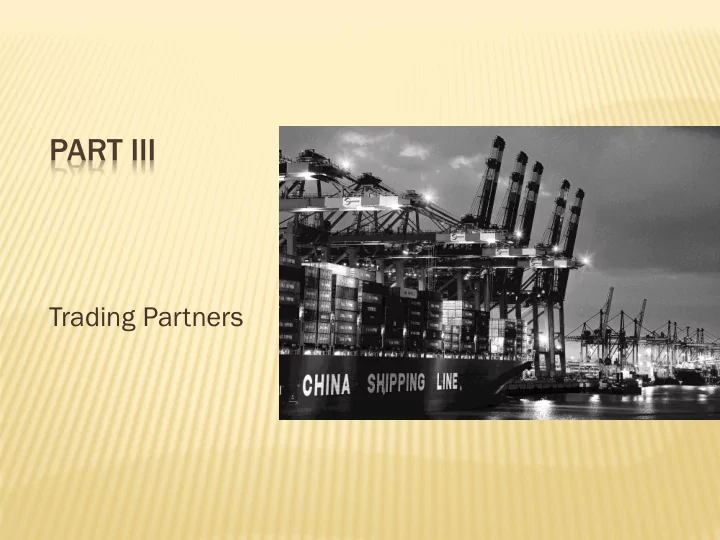

PART III Trading Partners
CHAPTER 11-1. ASIA AND OCEANIA FDM 471 Youngjin Bahng
OBJECTIVES Comprehend the magnitude of Asia as a political and economic trading bloc Appreciate the economic and political positions of individual countries within Asia Examine the status of the textile and apparel business in selected Asian and Oceania countries Project textile and apparel trading trends for Asian countries into the period following the phase-out of the quota system 3
INTRODUCTION Asia is the largest continent; countries range from fully developed to least developed Contains the world’s two most populous nations, China and India Half of the Asian continent’s countries have populations smaller than New York City Oceania consists primarily of two developed island countries, Australia and New Zealand 4
POLITICAL AND ECONOMIC OVERVIEW Asia and Oceania have been subdivided into the following four groups of nations: East Asia: China, South Korea, Taiwan, and Japan Southeast Asia: Hong Kong and eight of the ten ASEAN (Association of Southeast Asian Nations) countries South Asia: Pakistan to Bangladesh Oceania: Australia and New Zealand 6
ASIAN REGIONAL COLLABORATION The As Asia-Pacif acific c Ec Economic onomic Cooperation ooperation (A (APEC) PEC), established in 1989 as a forum for facilitating economic growth, cooperation, trade, and investment in the Asia-Pacific region Across-the-border connectivity in the form of regional and bilateral trade agreements is already in place, with many more on the horizon 7
9
ECONOMIC AND INDUSTRIAL China has the largest population; India is STANDING OF second COUNTRIES IN East Asia and Oceania have longer life expectancies and higher literacy rates than do REGIONS OF Southeast Asia and South Asia ASIA AND Based on GDP, China has the second largest economy in the world, followed by Japan, OCEANIA Germany, and India Japan, Australia, and New Zealand rank among the most fully developed nations in the world Overall, Oceania is rich; East Asia is relatively rich, except for China; Southeast Asia is relatively poor, except for Singapore; and South Asia is poor 10
OVERVIEW OF ASIAN TEXTILE AND APPAREL TRADE Migration of textile and apparel production to Asia began over 60 years ago At peak in the early 1980s, Hong Kong, Taiwan, and South Korea (the “big three”) supplied almost 30 percent of world exports of textile and apparel China exports tripled to nearly $120 billion, overtaking the EU, with “only” $112 billion Developed countries Australia and New Zealand both have increasing textile and apparel imports 13
Recommend
More recommend